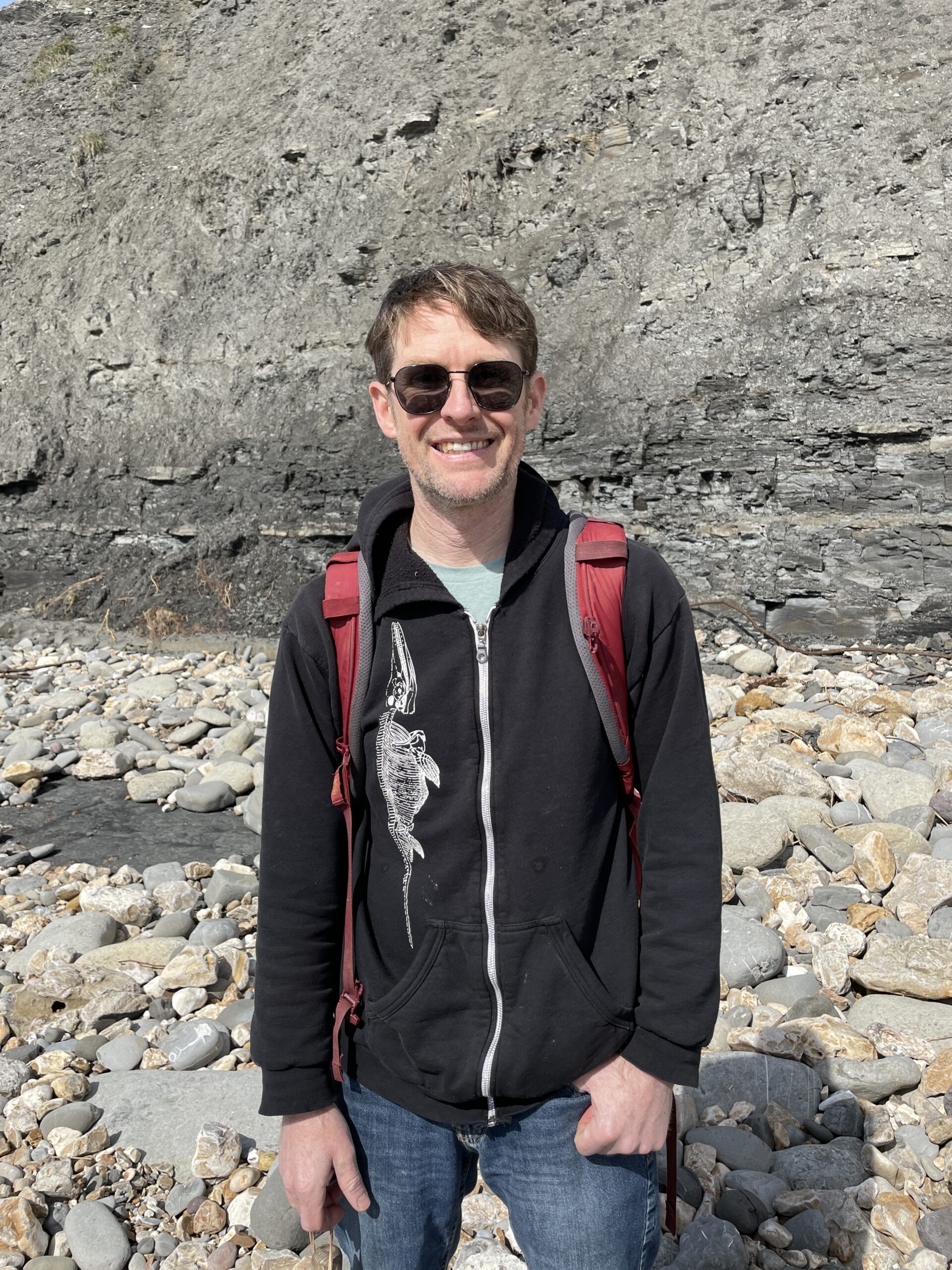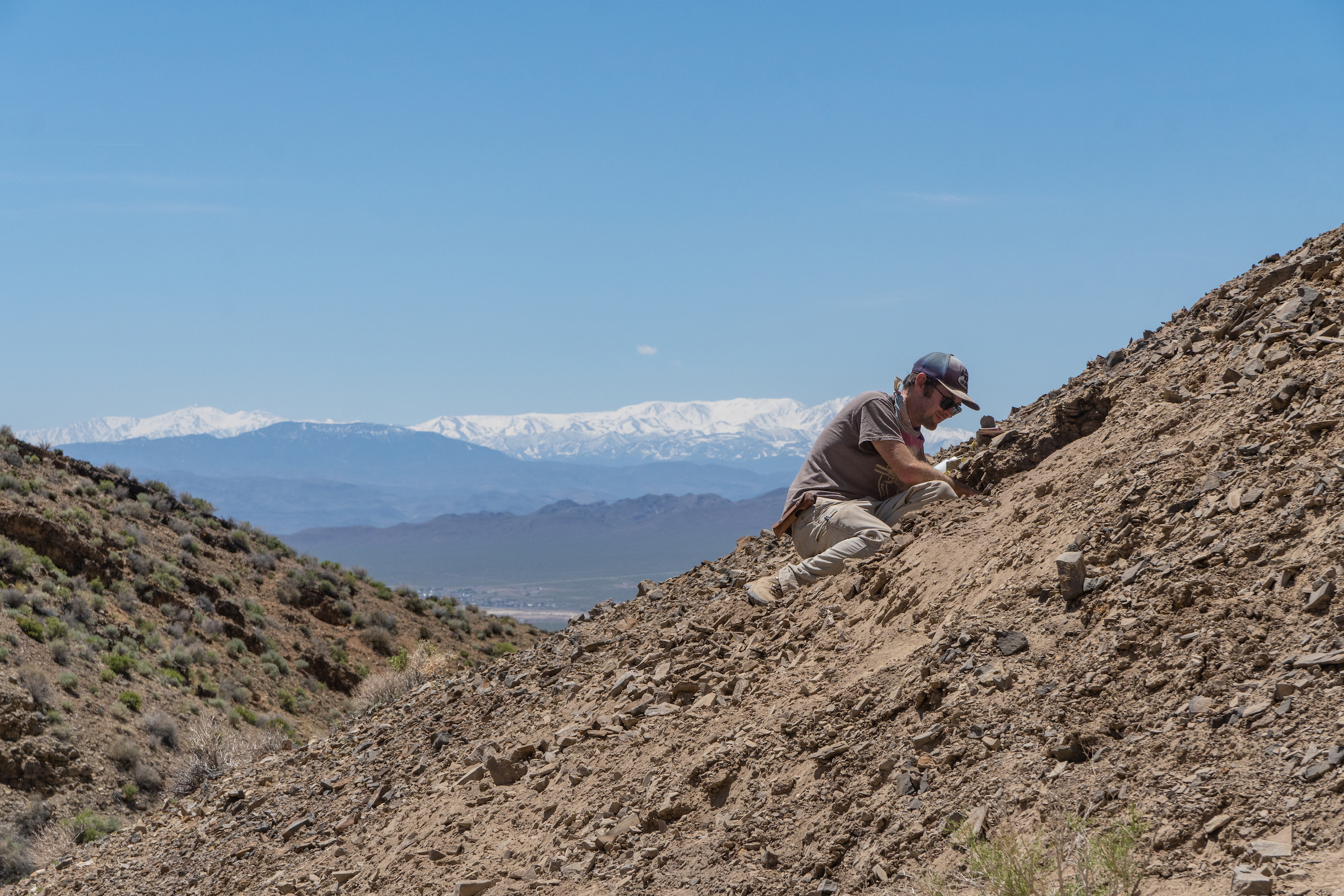Unveiling Evolutionary Transitions: Vanderbilt Professor Explores Triassic Mammals’ Adaptations to Changing Environments
By: Sarah Ward, Evolutionary Studies Communications Assistant
Vanderbilt professor Neil Kelley assisted in a study which characterized the evolutionary response of 250-million-year-old (Triassic) mammals to habitat transitions. Their work was published August 2023 in the Swiss Journal of Paleontology, and it explores how similar mammals can react differently to the same environmental challenges.
 Kelley finds the Triassic period interesting, because it’s the only interval of geologic time that starts and ends with major extinction events. “It was a time of evolutionary experimentation, during which the ecosystem had been wiped clean,” said Kelley, “things were re-building during the Triassic. There were opportunities to find new ways to be.” One of those new ways was the movement of land mammals into the ocean. This process is of particular interest to Kelley, as it requires that mammals surmount significant evolutionary hurdles to survive. “If you’re adapted to live on land and you move to living in water, the physics of moving through the water is different,” said Kelley, “food availability is different. Getting oxygen is different.”
Kelley finds the Triassic period interesting, because it’s the only interval of geologic time that starts and ends with major extinction events. “It was a time of evolutionary experimentation, during which the ecosystem had been wiped clean,” said Kelley, “things were re-building during the Triassic. There were opportunities to find new ways to be.” One of those new ways was the movement of land mammals into the ocean. This process is of particular interest to Kelley, as it requires that mammals surmount significant evolutionary hurdles to survive. “If you’re adapted to live on land and you move to living in water, the physics of moving through the water is different,” said Kelley, “food availability is different. Getting oxygen is different.”
How mammals address these challenges can vary. Sometimes, mammals come up with similar adaptations to these challenges, which is called convergent evolution. Other times, mammals come up with completely different adaptations to the same set of challenges. This is called evolution novelty. “I think both kinds of evolution can be true,” said Kelley, “there are some evolutionary rules mammals play by. And there are also mammals that seem to break the rules and do their own thing.”
To examine the evolutionary response of Triassic mammals which transitioned from land to sea, Kelley and colleagues examined their bones, which were found during a 2010 dig in Oregon. To examine them, they sliced open the bones and analyzed their structures under the microscope. “Bone is a living material. It’s deposited through a series of biological processes over the life cycle of an animal, and many animals re-work and alter their bones as they grow,” said Kelley, “when you look at the structure under the microscope, you get a little piece of that animal’s life story.” Conventionally, paleontologists focus on the exterior of the bone and quantify its size and shape. This can provide insight into an animal’s behavior, such as diet and running speed. Looking inside the bone can provide biological information at a finer scale, including metabolism and growth history. Some mammals even deposit annular growth rings which show up yearly like tree rings on a trunk.
The bones Kelley and his colleagues analyzed came from two groups of Triassic mammals which evolved from the same ancestor. Both of these groups adapted to living in water around the same time. As such, the researchers wondered if the mammals would convergently evolve, adapting in similar ways to their new habitat, or exhibit evolution novelty by carving out distinctive niches. “Anytime you have lots of similar animals living in the same place, there’s a limited number of resources available to them,” said Kelley. “Just the two that we looked at, which we think are very closely related, looked very different in terms of bone shape.”
One mammal had very dense bones with annular ring bands, while the other mammal’s bones were more spongy. These differences in bone type, while seemingly simple, are indicative of significantly different habitats and lifestyles. Animals with denser bones tend to live closer to shore and forage on the sea floor, while animals with light, spongy bones lived in the open ocean, far from shore. This is because lighter bones reduce the amount of energy required to move. As such, Kelley and colleagues suggest that, by partitioning resources, these mammals were able to co-exist and grow their populations. But Kelley says there’s more work to be done before we can be sure this is exactly what was taking place. “It’s pretty much the outcome of every scientific study,” says Kelley, “we need to use this data to think about next steps.”

One potential next step is to look at more bones from Triassic marine mammals to see if they’re similar or different. But a challenge of this kind of work is interpreting bone deposits, and there are still many bones of this kind left to be interpreted. “They tend to be preserved jumbled up or incomplete, so they’re a challenging group to work on,” said Kelley. But Kelley hopes to continue to work on Triassic marine mammals in the future. “I’m interested in what larger evolutionary themes we can draw from these relatively obscure animals that lived, died, and went extinct.”
Citation: Klein, N., Sander, P.M., Liu, J., Druckenmiller, P., Metz, E.T., Kelley, N.P. and Scheyer, T.M., 2023. Comparative bone histology of two thalattosaurians (Diapsida: Thalattosauria): Askeptosaurus italicus from the Alpine Triassic (Middle Triassic) and a Thalattosauroidea indet. from the Carnian of Oregon (Late Triassic). Swiss Journal of Palaeontology, 142(1), p.15. https://link-springer-com.proxy.library.vanderbilt.edu/article/10.1186/s13358-023-00277-3
Funding Information: Open Access funding enabled and organized by Projekt DEAL. Research supported by the Swiss National Science Foundation (31003A_179401) and the Humboldt Foundation.